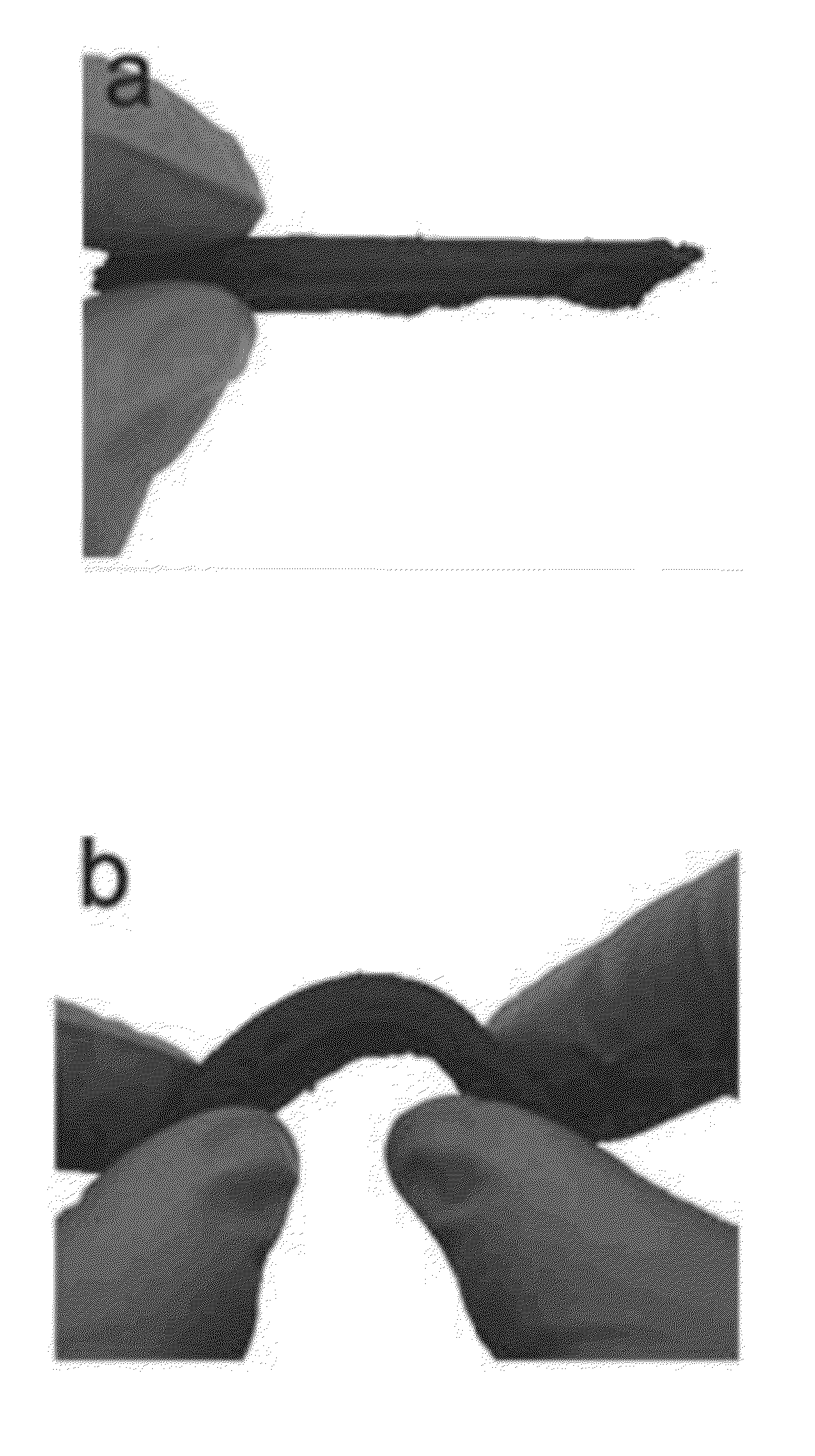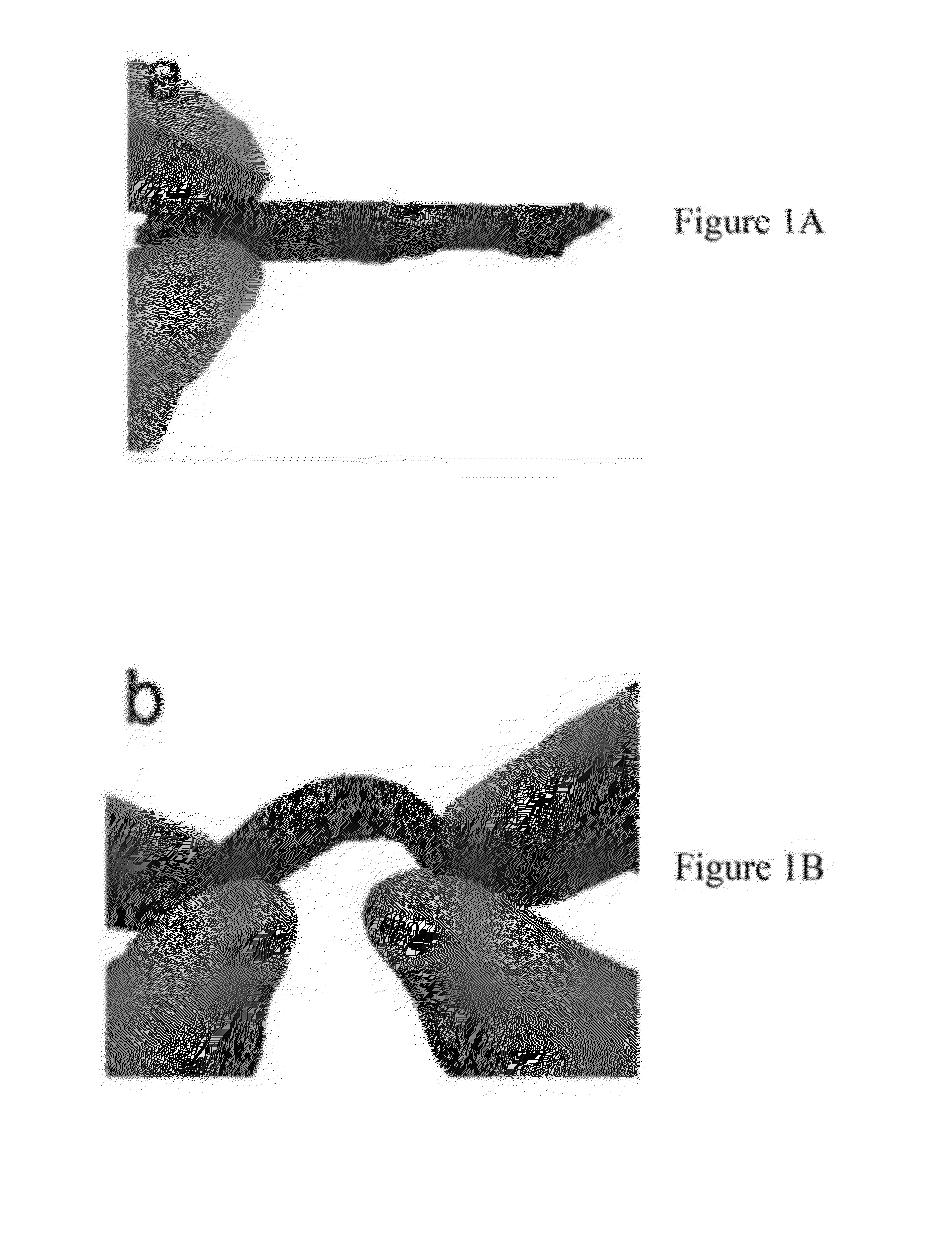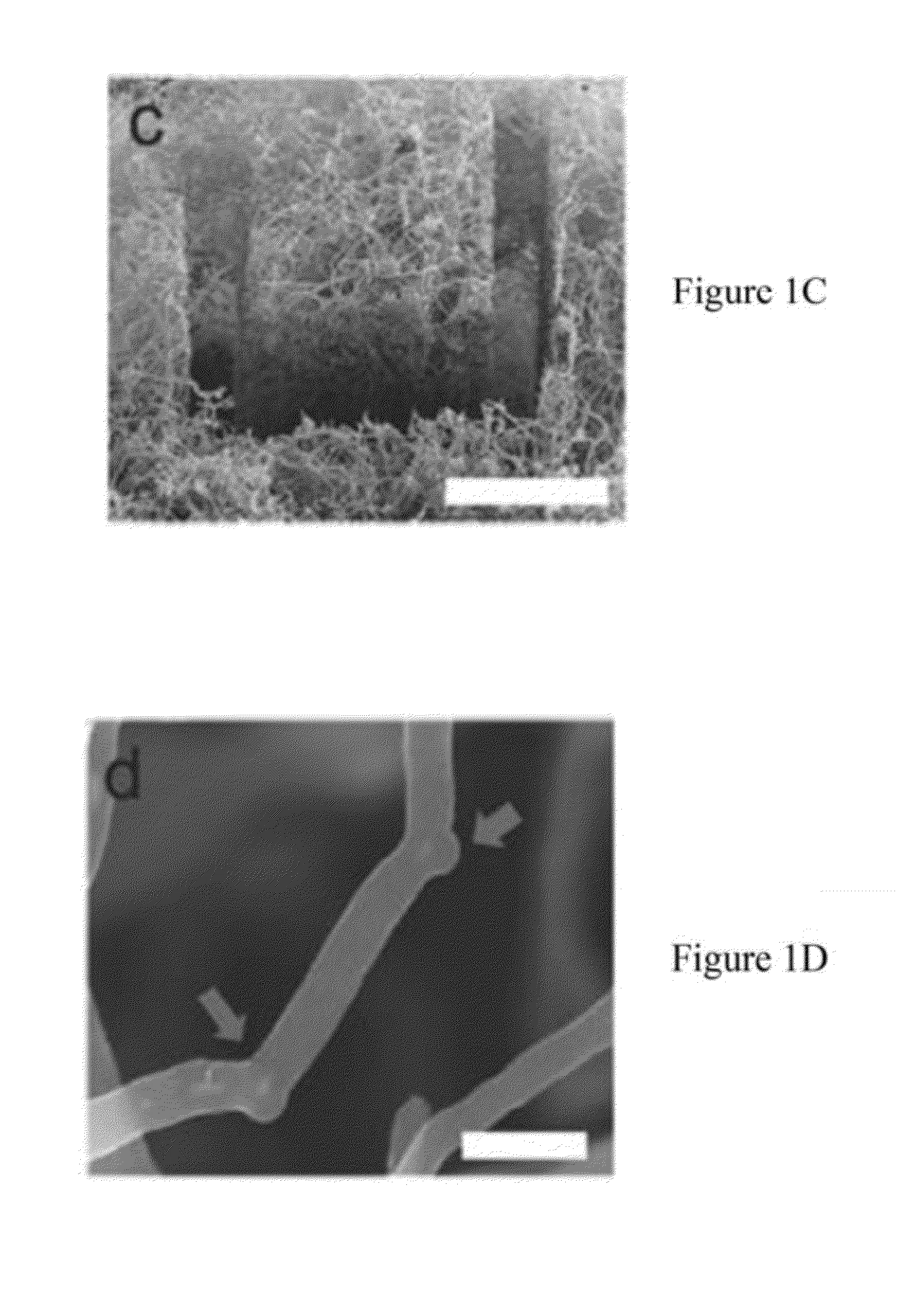Methods of synthesizing three-dimensional heteroatom-doped carbon nanotube macro materials and compositions thereof
- Summary
- Abstract
- Description
- Claims
- Application Information
AI Technical Summary
Benefits of technology
Problems solved by technology
Method used
Image
Examples
Embodiment Construction
[0121]The present invention is a new method for synthesizing heteroatom-doped carbon nanotube materials, such as CB×NT materials. Other heteroatom-doped carbon materials include sulfur doped carbon nanotube materials.
[0122]In the present specification, boron-doped carbon materials are primarily discussed throughout the detailed description; however, this is representative of doping carbon nanotubes with other heteroatoms.
[0123]Large-scalable CVD synthesis of CNTs (such as AACVD synthesis) with a heteroatom (such as boron) containing precursor resulted in “elbow” tubule morphologies forming sponge-like macroscale 3D materials of entangled carbon nanotube networks. It is believed that the heteroatom (i.e., boron) was responsible for the formation of these “elbow” defects, which evidences structural morphology effects of substitutional doping with foreign atoms in the pristine carbon nanotube lattice. The resulting heteroatom-doped carbon nanotube material (such as CB×NT material) exhi...
PUM
| Property | Measurement | Unit |
|---|---|---|
| Temperature | aaaaa | aaaaa |
| Temperature | aaaaa | aaaaa |
| Fraction | aaaaa | aaaaa |
Abstract
Description
Claims
Application Information
 Login to View More
Login to View More - R&D
- Intellectual Property
- Life Sciences
- Materials
- Tech Scout
- Unparalleled Data Quality
- Higher Quality Content
- 60% Fewer Hallucinations
Browse by: Latest US Patents, China's latest patents, Technical Efficacy Thesaurus, Application Domain, Technology Topic, Popular Technical Reports.
© 2025 PatSnap. All rights reserved.Legal|Privacy policy|Modern Slavery Act Transparency Statement|Sitemap|About US| Contact US: help@patsnap.com



